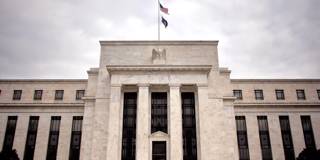Over time, central banks have been given additional objectives and have expanded their policy toolkits accordingly, particularly when called upon to prevent major shocks from triggering global depressions. But with policy innovation comes new risks, not least to central banks’ independence.
BASEL – How often have you heard that the US Federal Reserve has a dual mandate to promote both price stability and maximum employment? Did you know that the claim is false? Under the Federal Reserve Reform Act of 1977, the Fed also has a third mandate: to ensure moderate long-term interest rates.
There is nothing unusual about this objective. Central banks over the years have sought to prevent sudden increases in government bond yields. In the 1930s, for example, the US Treasury wanted the Fed to cap bond yields, leading to a compromise whereby the Fed agreed to maintain orderly market conditions. Even the landmark Treasury-Fed Accord of 1951, which restored the central bank’s independence after World War II, required the Fed to “assure the successful financing of the government’s requirements and, at the same time, to minimize monetization of the public debt.”
In fact, the Fed has a fourth objective, because it (like virtually all other central banks) is responsible for ensuring a stable financial system. The catch, here, is that most major central banks before the 2008 financial crisis had only one monetary policy instrument with which to carry out these tasks: the overnight interest rate in interbank markets. Hence, conventional academic thinking in the 1990s focused on a single, short-term instrument, which proved very convenient for keeping central banks out of political trouble.

BASEL – How often have you heard that the US Federal Reserve has a dual mandate to promote both price stability and maximum employment? Did you know that the claim is false? Under the Federal Reserve Reform Act of 1977, the Fed also has a third mandate: to ensure moderate long-term interest rates.
There is nothing unusual about this objective. Central banks over the years have sought to prevent sudden increases in government bond yields. In the 1930s, for example, the US Treasury wanted the Fed to cap bond yields, leading to a compromise whereby the Fed agreed to maintain orderly market conditions. Even the landmark Treasury-Fed Accord of 1951, which restored the central bank’s independence after World War II, required the Fed to “assure the successful financing of the government’s requirements and, at the same time, to minimize monetization of the public debt.”
In fact, the Fed has a fourth objective, because it (like virtually all other central banks) is responsible for ensuring a stable financial system. The catch, here, is that most major central banks before the 2008 financial crisis had only one monetary policy instrument with which to carry out these tasks: the overnight interest rate in interbank markets. Hence, conventional academic thinking in the 1990s focused on a single, short-term instrument, which proved very convenient for keeping central banks out of political trouble.